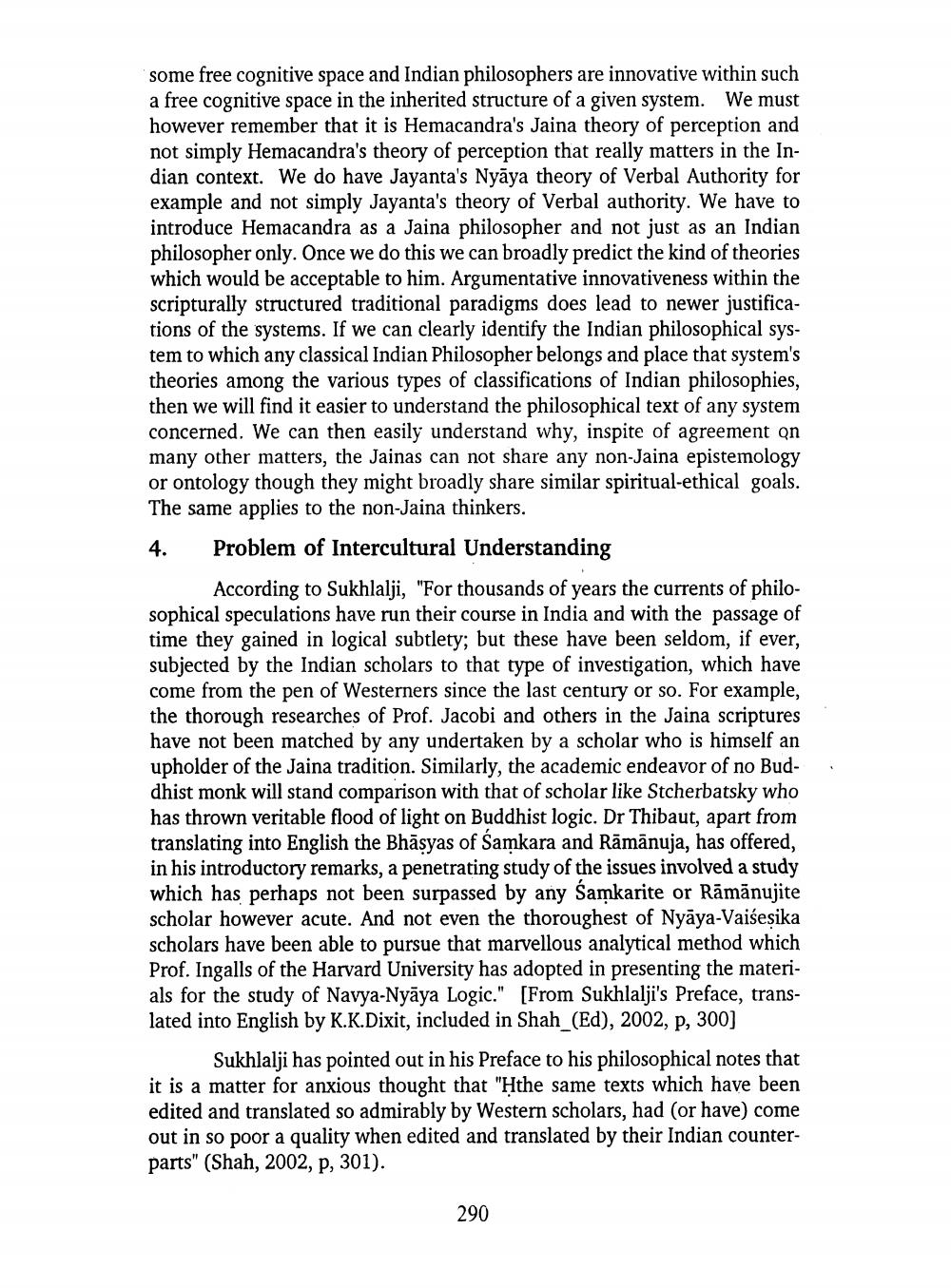________________
some free cognitive space and Indian philosophers are innovative within such a free cognitive space in the inherited structure of a given system. We must however remember that it is Hemacandra's Jaina theory of perception and not simply Hemacandra's theory of perception that really matters in the Indian context. We do have Jayanta's Nyāya theory of Verbal Authority for example and not simply Jayanta's theory of Verbal authority. We have to introduce Hemacandra as a Jaina philosopher and not just as an Indian philosopher only. Once we do this we can broadly predict the kind of theories which would be acceptable to him. Argumentative innovativeness within the scripturally structured traditional paradigms does lead to newer justifications of the systems. If we can clearly identify the Indian philosophical system to which any classical Indian Philosopher belongs and place that system's theories among the various types of classifications of Indian philosophies, then we will find it easier to understand the philosophical text of any system concerned. We can then easily understand why, inspite of agreement on many other matters, the Jainas can not share any non-Jaina epistemology or ontology though they might broadly share similar spiritual-ethical goals. The same applies to the non-Jaina thinkers. 4. Problem of Intercultural Understanding
According to Sukhlalji, "For thousands of years the currents of philosophical speculations have run their course in India and with the passage of time they gained in logical subtlety; but these have been seldom, if ever, subjected by the Indian scholars to that type of investigation, which have come from the pen of Westerners since the last century or so. For example, the thorough researches of Prof. Jacobi and others in the Jaina scriptures have not been matched by any undertaken by a scholar who is himself an upholder of the Jaina tradition. Similarly, the academic endeavor of no Buddhist monk will stand comparison with that of scholar like Stcherbatsky who has thrown veritable flood of light on Buddhist logic. Dr Thibaut, apart from translating into English the Bhāsyas of Samkara and Rāmānuja, has offered, in his introductory remarks, a penetrating study of the issues involved a study which has perhaps not been surpassed by any Samkarite or Rāmānujite scholar however acute. And not even the thoroughest of Nyāya-Vaišeșika scholars have been able to pursue that marvellous analytical method which Prof. Ingalls of the Harvard University has adopted in presenting the materials for the study of Navya-Nyāya Logic." [From Sukhlalji's Preface, translated into English by K.K.Dixit, included in Shah_(Ed), 2002, p, 300)
Sukhlalji has pointed out in his Preface to his philosophical notes that it is a matter for anxious thought that "Hthe same texts which have been edited and translated so admirably by Western scholars, had (or have) come out in so poor a quality when edited and translated by their Indian counterparts" (Shah, 2002, p, 301).
290




